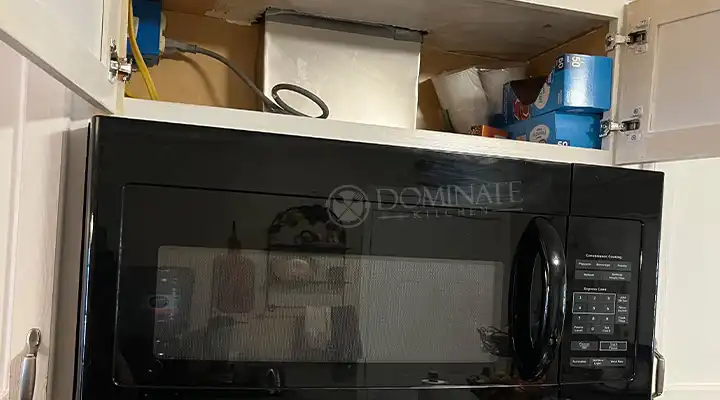Toaster Oven Keeps Tripping Surge Protector | How To Fix?
A toaster oven is a handy kitchen appliance for cooking and baking, but it can be quite frustrating when it repeatedly trips the surge protector. If you’ve encountered this issue, you’re not alone.
In this article, we’ll explore the common reasons behind a toaster oven tripping a surge protector and provide step-by-step solutions to help you resolve the problem. We’ll also address frequently asked questions to ensure you have a comprehensive understanding of the issue and its solutions.

How to Fix Your Toaster Oven that Keeps Tripping Surge Protectors?
Before we delve into the solutions, it’s essential to understand why your toaster oven might be tripping your surge protector. A surge protector is designed to safeguard your devices from voltage spikes and electrical surges. However, when a surge protector consistently trips while the toaster oven is in use, it indicates an underlying problem. This problem could be related to the surge protector itself, the toaster oven, or the electrical setup in your home.
Surge Protector Rating
One common reason for a surge protector tripping is that it’s not rated to handle the power requirements of your toaster oven. Check the surge protector’s maximum wattage or amperage rating and compare it with your toaster oven’s power specifications. If the toaster oven exceeds the surge protector’s rating, it can cause it to trip. To resolve this issue, replace the surge protector with one that has a higher rating to accommodate the toaster oven’s power needs.
Direct Outlet Connection
If your toaster oven consistently trips the surge protector, try plugging it directly into a wall outlet. This step helps you identify whether the issue lies with the toaster oven or the surge protector. If the toaster oven does not trip the circuit when connected directly to an outlet, it’s likely that the surge protector is the problem. In this case, you may need to replace the surge protector.
Toaster Oven Inspection Solution
Before blaming the surge protector, it’s essential to ensure that your toaster oven is in good working condition. Check the power requirements, which are typically listed on a label or in the user manual. Ensure that the appliance is not drawing more power than the surge protector can handle. Additionally, inspect the toaster oven’s power cord for any visible damage or wear. A damaged cord could cause electrical issues, so it’s crucial to address any issues you find.
Avoid Overloading
Surge protectors are not meant to handle an unlimited number of devices. Overloading a surge protector can lead to overheating and tripping. Unplug any unnecessary devices from the surge protector to reduce the load on it. This can help prevent overloads and ensure that your toaster oven operates smoothly without tripping the circuit.
Replace the Surge Protector
If your surge protector is old or has been used extensively, it might be worn out and less effective. In such cases, replacing the surge protector is a straightforward solution. Choose a new surge protector with a sufficient rating to handle your toaster oven’s power requirements. This should help prevent tripping and ensure the safety of your appliances.
Use a Power Conditioner
In some situations, using a power conditioner in conjunction with a surge protector can help stabilize the electrical supply to your toaster oven. Power conditioners are designed to filter and regulate the incoming power, reducing the risk of voltage fluctuations. This can be particularly useful if your home experiences frequent electrical fluctuations or surges.
Consult an Electrician
If none of the above solutions seem to work and your toaster oven consistently trips the circuit, it’s time to consult a professional electrician. There may be an underlying issue with the electrical wiring or circuit in your home that requires expert attention. An electrician can assess and rectify any electrical problems to ensure the safe operation of your appliances.
Consider a Dedicated Circuit
If you regularly experience tripping issues when using high-wattage appliances like a toaster oven, it’s advisable to consider having a dedicated circuit installed for these appliances. A dedicated circuit ensures that these power-hungry devices do not interfere with other devices on the same circuit, reducing the likelihood of tripping and enhancing electrical safety in your home.
Why is my toaster oven tripping the surge protector but not other devices?
Your toaster oven may have higher power requirements than other devices. If it exceeds the surge protector’s rating, it’s more likely to trip the circuit.
Can I use a surge protector with a higher rating to solve the problem?
Yes, using a surge protector with a higher rating can prevent tripping. Just ensure that it matches or exceeds the power requirements of your toaster oven.
Why does plugging the toaster oven directly into an outlet resolve the issue?
This test helps identify whether the toaster oven or the surge protector is causing the problem. If the toaster oven works fine when plugged into an outlet, the surge protector might be the issue.
How do I know if my toaster oven’s power cord is damaged?
Examine the cord for any visible signs of wear, fraying, or exposed wires. If you see any damage, it’s best to replace the cord to prevent electrical hazards.
Can I daisy-chain surge protectors to accommodate my toaster oven?
No, daisy-chaining surge protectors are not recommended and can pose safety risks. It’s better to use a single surge protector with the appropriate rating.






